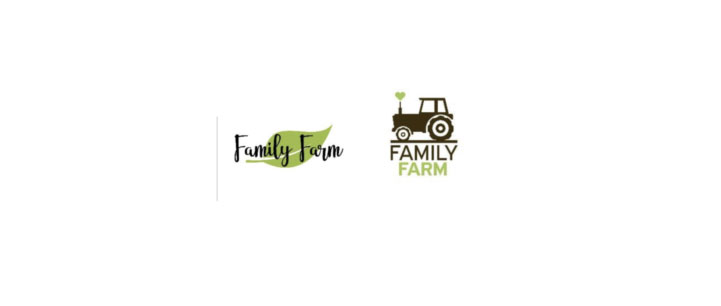The Greek company AGRIFARM ΙΔΙΩΤΙΚΗ ΚΕΦΑΛΑΙΟΥΧΙΚΗ ΕΤΑΙΡΕΙΑ filed an opposition against the registration in Bulgaria of a trademark – “FAMILY FARM” – combined.
The Bulgarian company – food producer (farmer) is represented by the team of IPConsulting.
The opposition is based on an earlier European Union trademark – combined and contains an element “Family Farm”.
The goods and services of contested trademarks
In the analysis of the goods and services, the Patent Office comes to the following conclusion:
In assessing the similarity of the goods or services concerned all the relevant factors relating to those goods or services themselves should be taken into account. Those factors include, inter alia their nature and users and their method of use and whether they are in competition with each other or are complementary. (Judgment of the Court of Justice of the European Union C-39/97 “Canon”, par.23).
The contested goods in Classes 29, 30, 31 are found by Opposition Division as being identical to those of the earlier trademark and in respect of them the requirement of Art.12 LMGI is met, namely the contested goods are identical or similar.
The contested goods in Classes 32 and 35 are considered not being similar to those of the earlier trademark and in respect of them the requirement of Art. 12 could not apply, because one of the cumulative requirement of Art. 12 is not met.
The signs
Regarding the compared signs – they have the following visualizations:

According to the Patent Office:
Visual similarity is found in the verbal elements of the two trademarks because they consist of the same words arranged in the same order – Family Farm, as well as in color, as long as both trademarks use two colors, one of which is green, and the other two – brown- black / black, are quite similar. The figurative elements are completely different, as are the fonts used, although both are widely used. Therefore there is a low degree of visual similarity between the signs.
Aurally and conceptually, the verbal elements of the two trademarks are phonetically and semantically identical – Family Farm. Even for consumers who do not speak English , it will not be a problem to pronounce them as “family farm” and translate them as “family farm”, because the two English words have a similar sound to their Bulgarian counterparts.
In summary of the above, there is a low degree of visual similarity, aurally and conceptually identical between the compared signs, therefore the third cumulative requirement in the provision of Art. 12, par.1, item 2 of the LMGI is not met.
Degree of attention of relevant users
The risk that the public might believe that the goods or services in question come from the same undertaking or, as the case may be, from economically-linked undertakings, constitutes a likelihood of confusion. The assessment of the likelihood of confusion is general and is made on the basis of all relevant factors in the particular case. – (Judgment of the Court of Justice of the European Union C-39/97, “Canon”, par.29).
Conclusion
As far as the last cumulative requirement in the provision in Art. 12, para 1, item 2 of the LMGI is not met, it does not be applied also with regard to the registration of the contested trademark for the identical goods of classes 29, 30 and 31.
The lack of similarity between the goods and services in Classes 32 and 35 of the contested trademark and the goods in the earlier trademark leads to the conclusion that the provision of Art. 12, par.1, item 2 of the LMGI cannot be applied to the registration of the trademark at issue for those goods and services.
At the same time, a conclusion is drawn about the low degree of distinctiveness of the Family Farm element, namely:
In the present case, the dominant element in the earlier trade mark is the stylised image of an agricultural machine/tractor because it is more massive and is positioned first, i.e. on top, of the word elements. The distinctiveness of the mark is also due to the figurative representation, because the phrase Family Farm will be perceived by the users of the goods in Classes 29, 30 and 31 for which the trademark is registered as an indication that those goods are produced on a far§m which is family-owned, i.e. run by members of the same family/transmitted through the family.
In the case of the attacked mark, it could also be said that the dominant element is the figurative one – a stylized leaf, because it is more massively represented, as opposed to the word elements written in a thin handwritten font. Here again, the distinctiveness of the sign is carried by the figurative element, because here again the word element is Family Farm, which, in relation to the identical goods in Classes 29, 30 and 31, is perceived as an indication of origin, but it does not indicate the specific producer for consumers’ guidance, but indicates that the owners/managers of the farm have family ties.
In conclusion – the opposition was completely rejected and the Bulgarian trademark was allowed for registration.
The figurative elements of the two trademarks create a completely different impression and therefore there is no likelihood of confusion because the visual differences will enable consumers to distinguish the marks. They are also unlikely to associate them as belonging to the same or economically related persons because their matching verbal elements are descriptive and nothing in the figurative elements creates a possible link between the trademarks.


